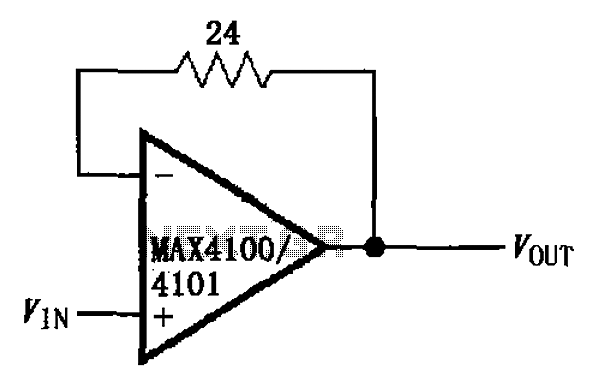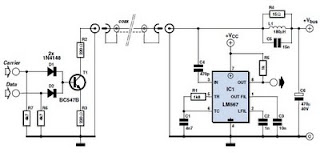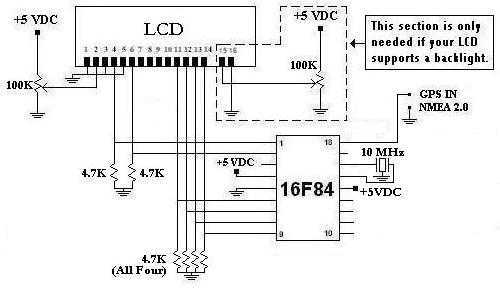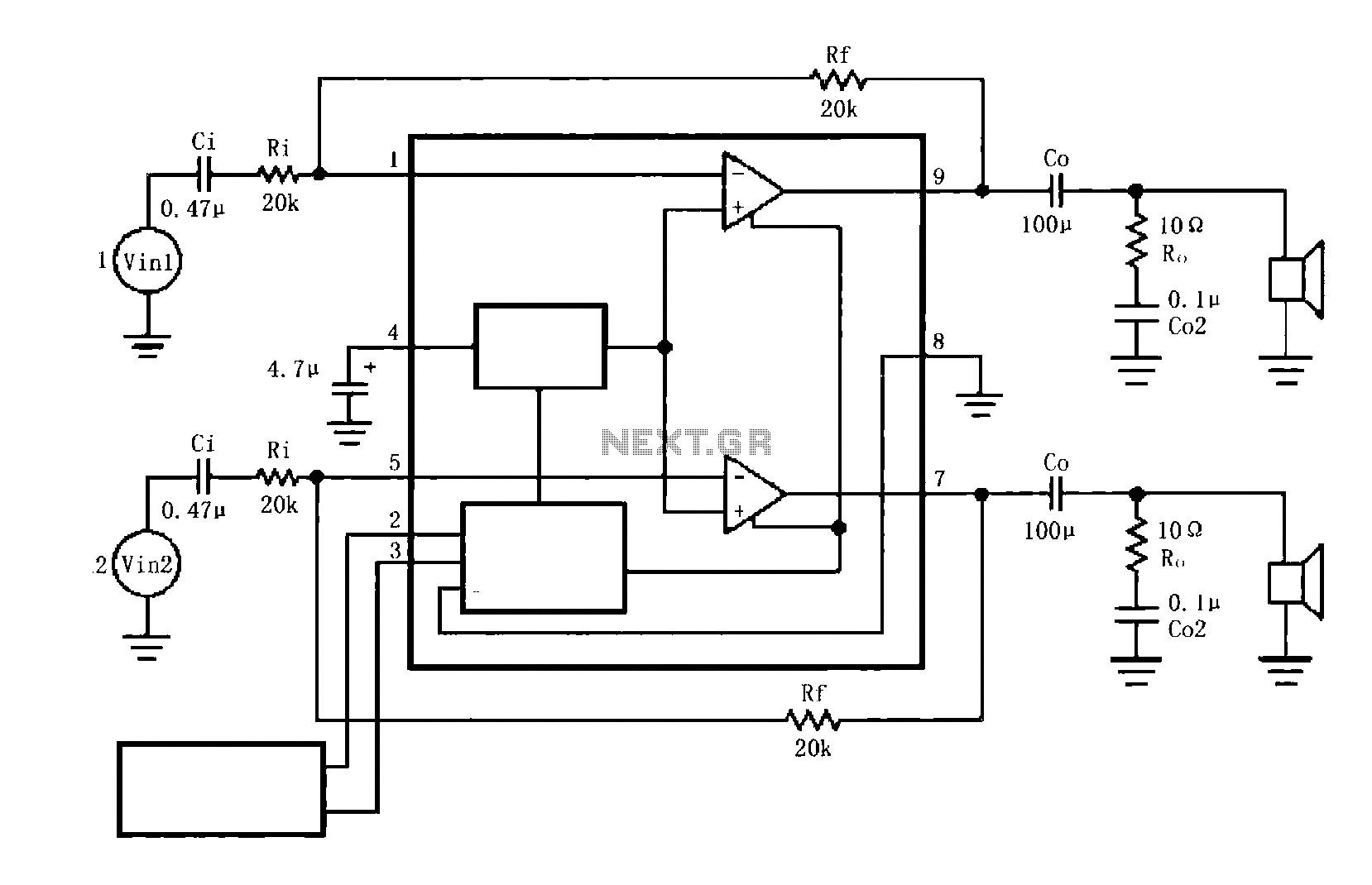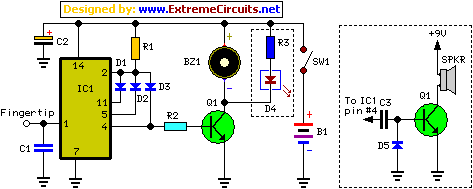
16 G— 2 LCD Volt Meter & Ampere Meter With PIC Schematic Diagram
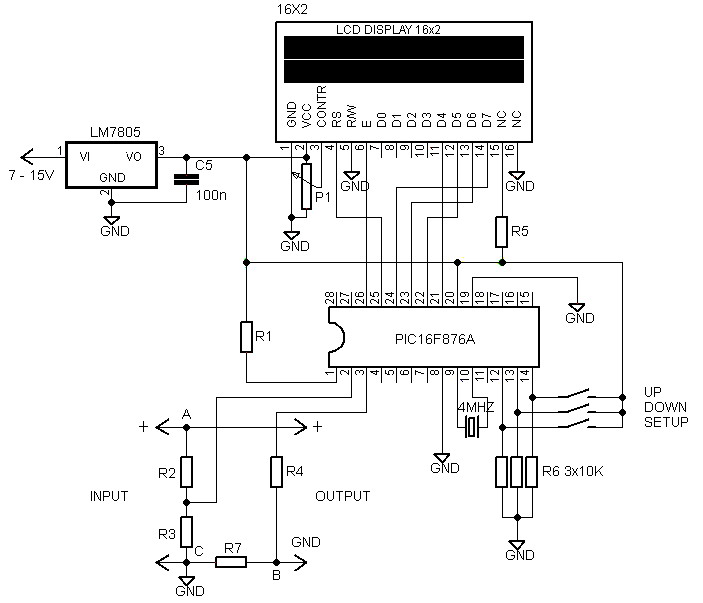
Voltmeters and ammeters with a PIC microcontroller can be utilized to measure voltage and current simultaneously. The configuration of voltmeters and ammeters using the PIC16F876A serves as a data processor for voltage and current measurements. This circuit employs a 16x2 LCD display for showcasing the measured voltage and current values. The article discusses voltmeters and ammeters with a PIC, focusing specifically on these devices. Additional details can be observed in the accompanying images of the voltmeter and ammeter with PIC below.
The circuit design incorporates the PIC16F876A microcontroller, which is central to processing the measurements of voltage and current. The microcontroller features multiple analog-to-digital converters (ADCs) that facilitate the conversion of analog voltage signals into digital data for processing. This data can then be displayed on the 16x2 LCD, which serves as the user interface for reading the measurements.
The voltmeter section of the circuit typically consists of a voltage divider network to scale down high voltages to levels suitable for the microcontroller’s ADC. Resistors in the divider are selected based on the expected input voltage range to ensure accurate readings. The ammeter section often employs a shunt resistor in series with the load, where the voltage drop across the shunt is measured and converted to a current reading using Ohm’s law.
The LCD display is interfaced with the PIC microcontroller using a parallel communication method, allowing for the transmission of character data to be displayed. The microcontroller executes a program that continuously reads the ADC values corresponding to the voltage and current, processes these values, and formats them for display.
Power supply considerations are crucial; the circuit may require a regulated power source to ensure the PIC and the display operate reliably. The design may also include filtering capacitors to stabilize the power supply and reduce noise, which is essential for accurate measurements.
In summary, this circuit effectively combines the capabilities of the PIC16F876A microcontroller with a 16x2 LCD display to provide real-time measurement of voltage and current, making it a valuable tool for various electronic applications.Volt meters & ampere meter with PIC can be used to measure voltage and current simultaneously. The series of volt meters & ampere meter with PIC16F876A PIC is used as a data processor voltage and current are measured. This circuit uses the viewer in the form of 16 G— 2 LCD used for the data display voltage and current measurements.
In the article volt meter and ampere meter with PIC are discussed kerannya limited to devices only. More detail can be seen from the image sequence volt meter and ampere meter with PIC below. You are reading the Circuits of 16 G— 2 LCD Volt Meter & Ampere Meter With PIC And this circuit permalink url it is 🔗 External reference
The circuit design incorporates the PIC16F876A microcontroller, which is central to processing the measurements of voltage and current. The microcontroller features multiple analog-to-digital converters (ADCs) that facilitate the conversion of analog voltage signals into digital data for processing. This data can then be displayed on the 16x2 LCD, which serves as the user interface for reading the measurements.
The voltmeter section of the circuit typically consists of a voltage divider network to scale down high voltages to levels suitable for the microcontroller’s ADC. Resistors in the divider are selected based on the expected input voltage range to ensure accurate readings. The ammeter section often employs a shunt resistor in series with the load, where the voltage drop across the shunt is measured and converted to a current reading using Ohm’s law.
The LCD display is interfaced with the PIC microcontroller using a parallel communication method, allowing for the transmission of character data to be displayed. The microcontroller executes a program that continuously reads the ADC values corresponding to the voltage and current, processes these values, and formats them for display.
Power supply considerations are crucial; the circuit may require a regulated power source to ensure the PIC and the display operate reliably. The design may also include filtering capacitors to stabilize the power supply and reduce noise, which is essential for accurate measurements.
In summary, this circuit effectively combines the capabilities of the PIC16F876A microcontroller with a 16x2 LCD display to provide real-time measurement of voltage and current, making it a valuable tool for various electronic applications.Volt meters & ampere meter with PIC can be used to measure voltage and current simultaneously. The series of volt meters & ampere meter with PIC16F876A PIC is used as a data processor voltage and current are measured. This circuit uses the viewer in the form of 16 G— 2 LCD used for the data display voltage and current measurements.
In the article volt meter and ampere meter with PIC are discussed kerannya limited to devices only. More detail can be seen from the image sequence volt meter and ampere meter with PIC below. You are reading the Circuits of 16 G— 2 LCD Volt Meter & Ampere Meter With PIC And this circuit permalink url it is 🔗 External reference

